in|filtration (2020)
Space and sound installation with twelve rows à four widths of fabric, 48 speakers and 96 infrared sensors. Sound composition: Hanns Holger Rutz and David Pirrò. Visual composition: Xhylferije Kryeziu, Carolina Silveira, Gaja Znidarsic (mentors: Nayarí Castillo, Franziska Hederer, Carlotta Bonura). Sensors: Richard Dank. Light: Alexander Krug. A project of IEM and ISD Graz. Embedded into the EU project MAST. Exhibition: esc media art lab, Graz, Austria, August 2020.
In|filtration _ Ein|sickerung is a space and sound installation dealing with persistent and inconspicuous processes of exchange, in which surfaces and membranes between adjacent actors and systems are not only regarded as forms of dissociation, but as partially permeable layers, thus allowing imaginings, signals, materials, light and sound to propagate and melt the identities of the separate. A translucent and sensorial space/body acts as a vessel for sound structures that migrate between two seemingly opaque computer systems. Production of space is at the core of this architecturally underlaid project. The physical space is interwoven with an algorithmic space, sounding and sensing its environment. Algorithmic space is not primarily the result of form generation but of an intrinsic speculative movement and the interaction with humans who write code and experiment with it. Making visible and audible the exchange processes between humans and machines becomes a means of critically articulating this space.
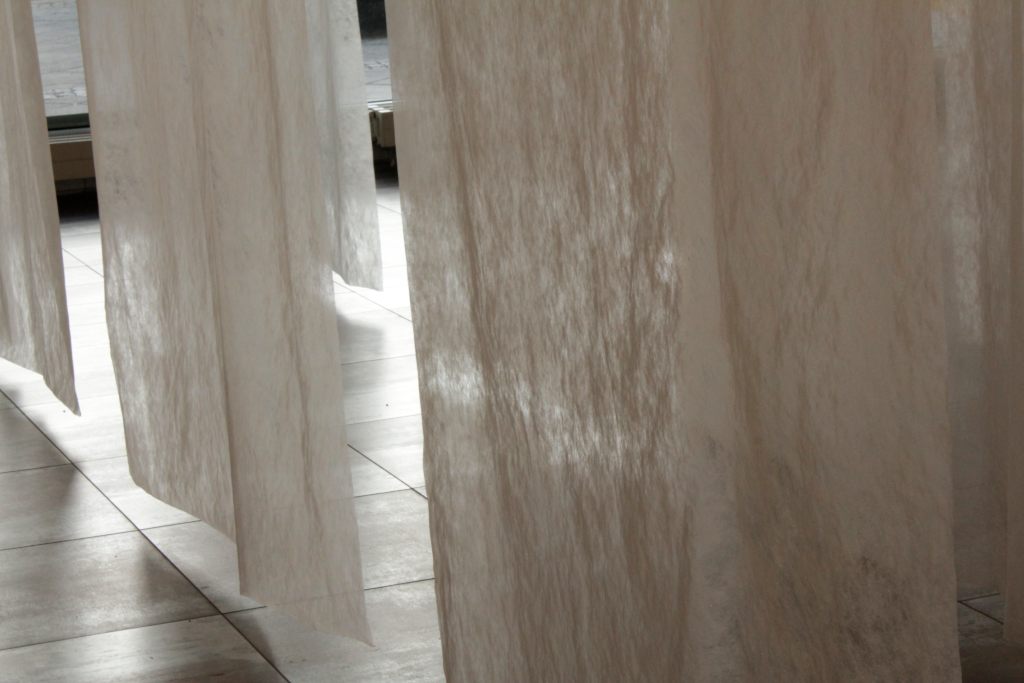
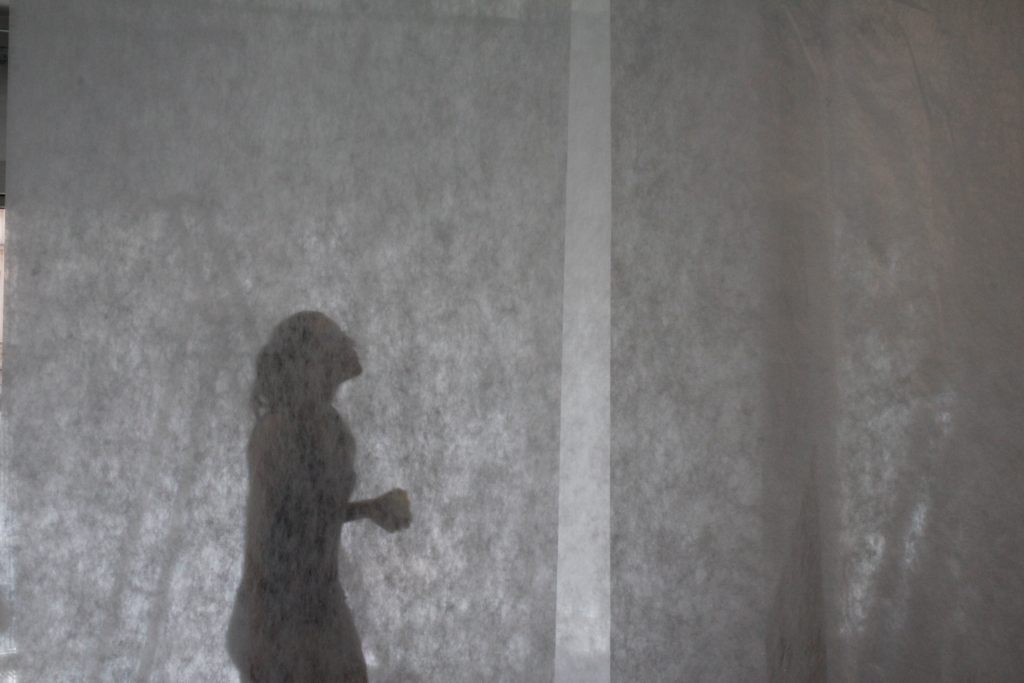
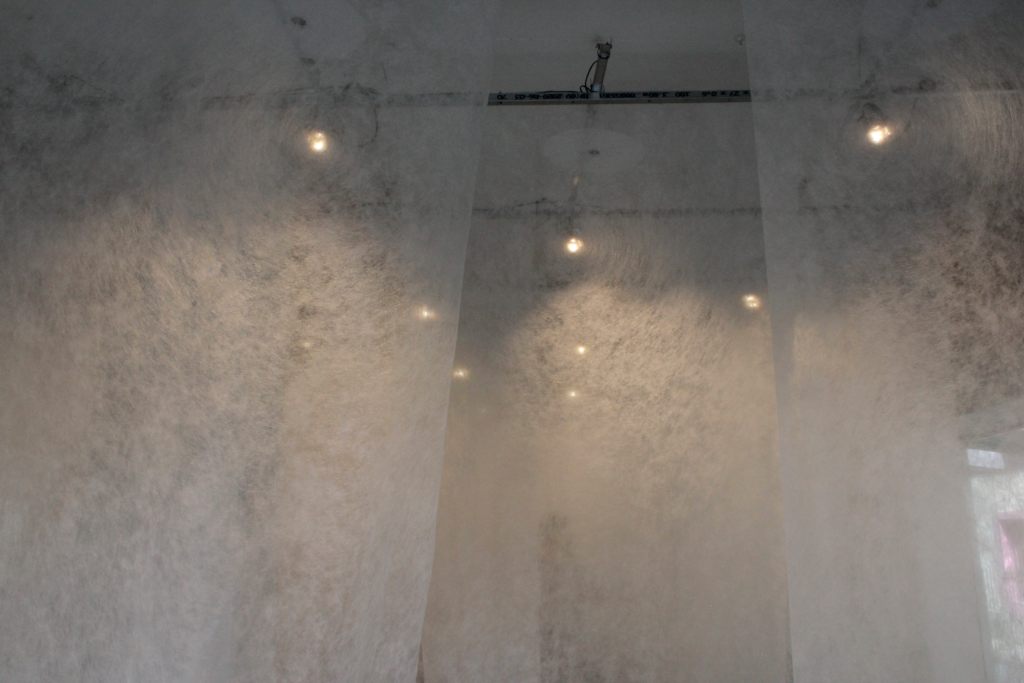
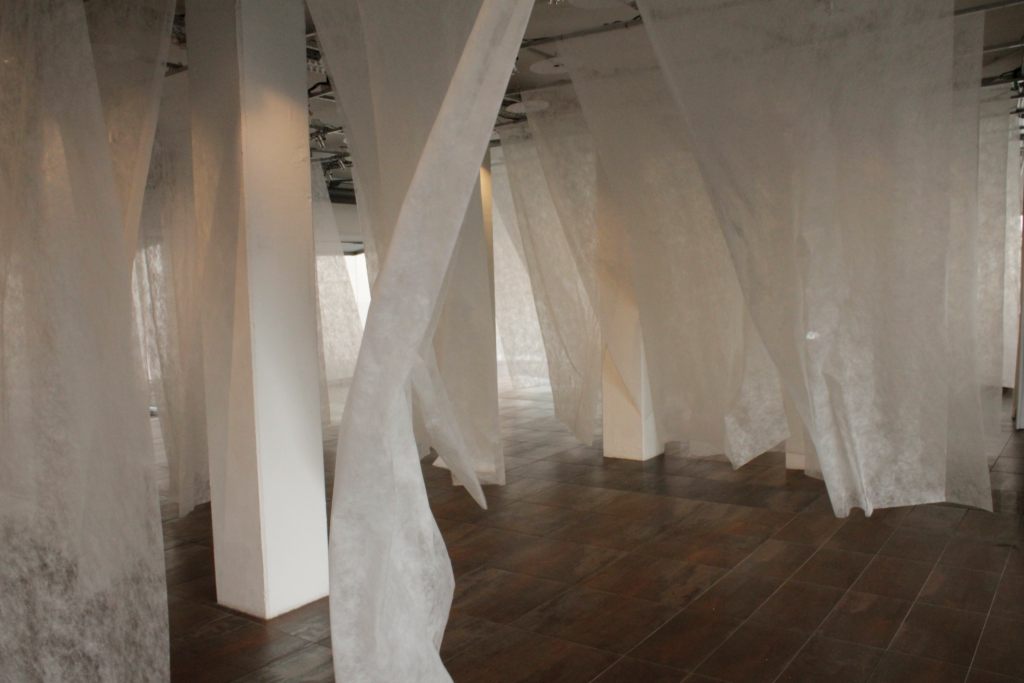
in|filtration (room rec.)
In this installation, the visual, sonorous and algorithmic spaces are partitioned into twelve segments along an axis, each of which is thus in contact with its neighbouring segments. While segmentation is often understood as a method of analysis—for instance in biology to disassemble organisms—it is here regarded as a form of synthesis and spatialisation, putting side by side without hierarchy. In the social realm, segmentary developments are often seen as problematic, as communities become enclaves isolated from each other, but the spatialisation performed here emphasises the “equivalidity” (gleiche Gültigkeit) over indifference (Gleichgültigkeit). When observing the world on global scale, perhaps general validity (Allgemeingültigkeit) is no longer a property sustained by contemporaneity. The question then becomes, how we can imagine new forms of infiltration, creating “weak ties” that have the potential to produce emergent shared meaning.
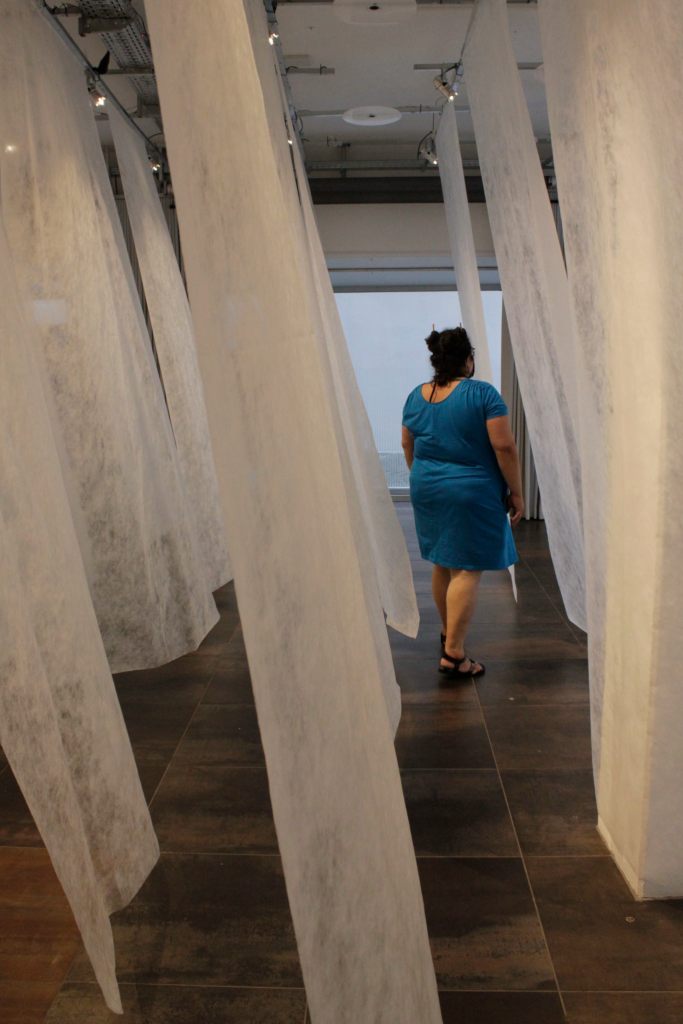
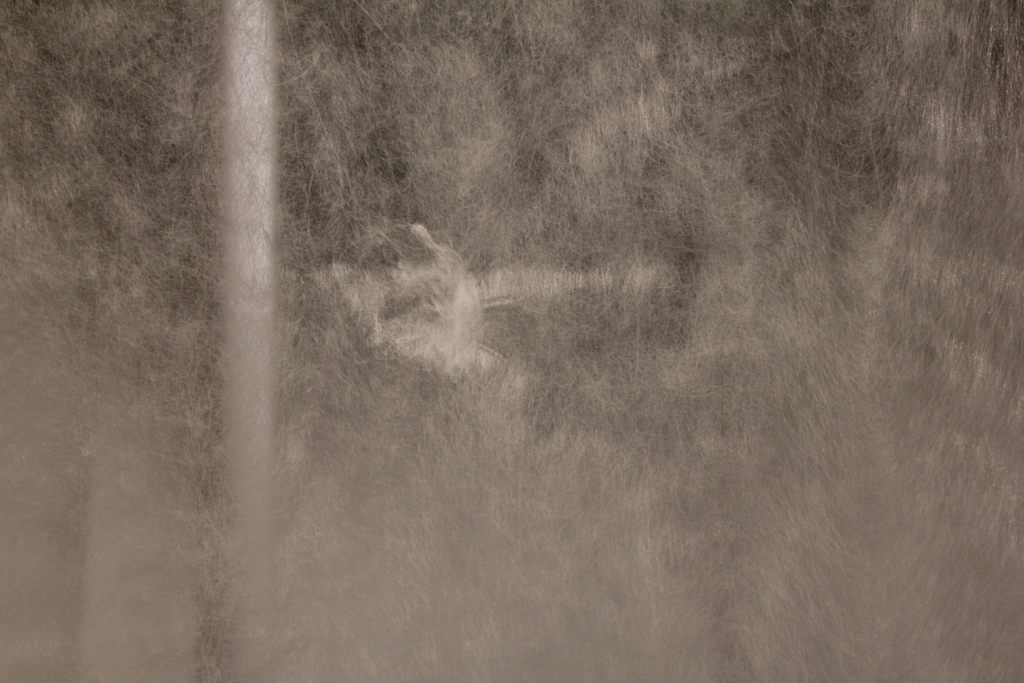
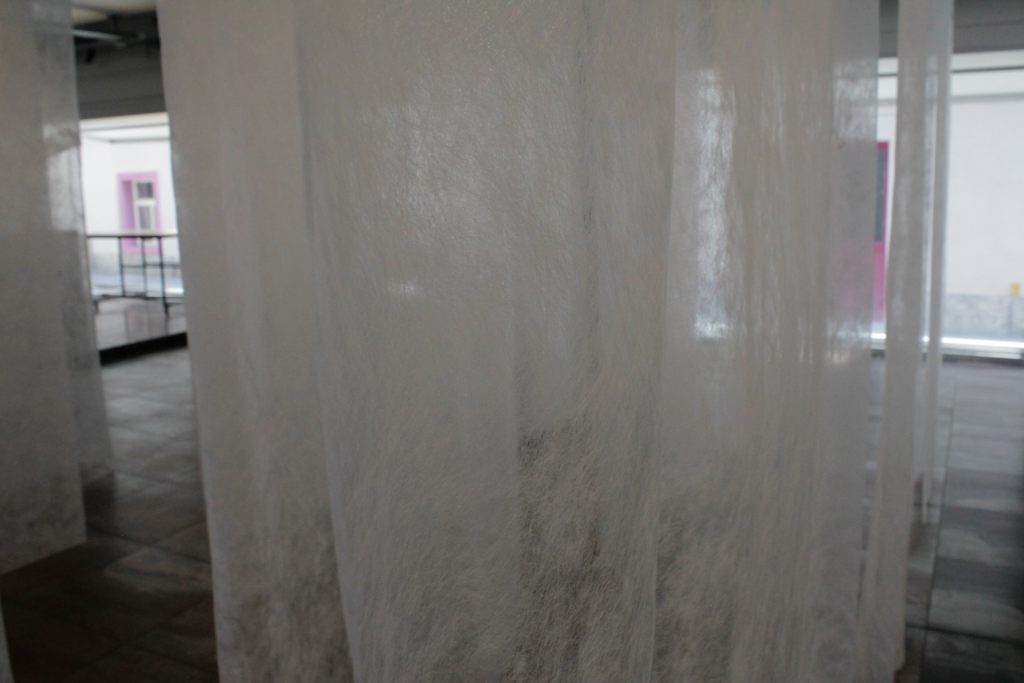
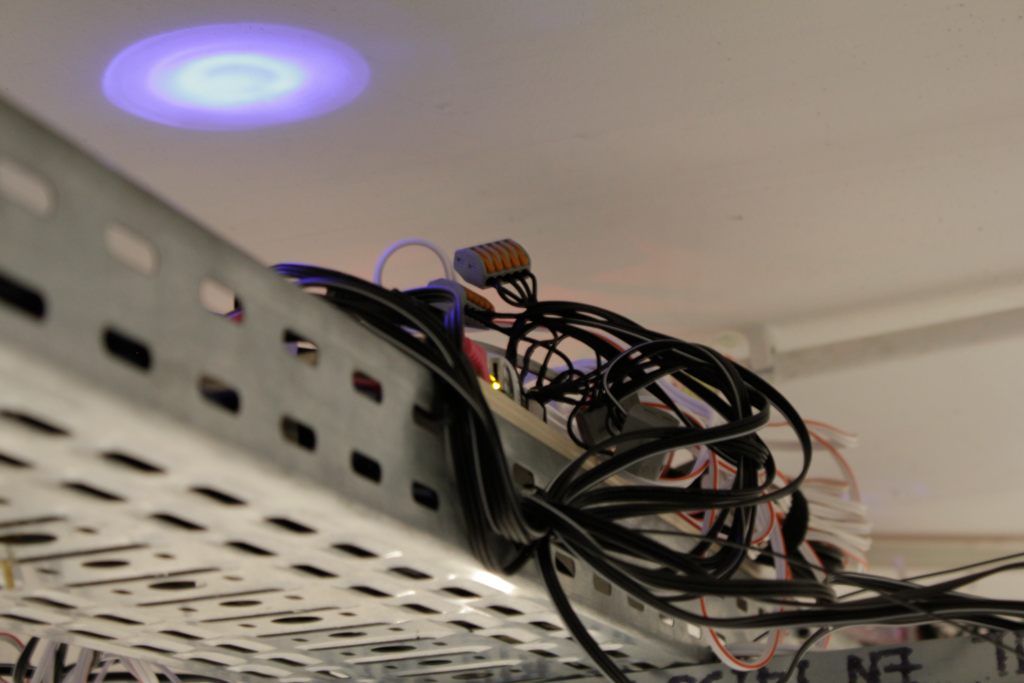
On the Sound Composition
The sound composition translates the mutually coupled systems used in the improvisation project Anemone Actiniaria (Rutz/Pirrò) into the installative context. Instead of two human performers, the two systems are replicated six times each, and augmented with processes that act as simple autonomous improvisers themselves. The departing point again is space and spatiality: First, there is the distinction between a common space and an individual (or inner) space. The common space is what is shared as structure between my six nodes. This is a repertoire of forms; forms of topology in the sense of a sound situation in Wolkenpumpe—the system I use for improvisation—a graph of connected nodes. The individual space is opened through genetic programming of synthesic sounds. The identity is divided into a given form of a “trunk space”, and a reflected one through the introduction of sensor data. The “trunk space” is obtained from digital scans of drawings I created from tracing tree trunks on wax paper. These drawings were previously used as one component of the video piece Inner Space. Now the scans were algorithmically transformed into sounds which served as targets or attractors to the genetic programming of sound synthesis structures, each row in the space associated with one trunk drawing. The signal processing repertoire is constrained to “rectangular forms” (rectangle and impulse waveforms), frequency filtering, and non-linear filtering and distortion, to create a correspondence with the visual and the conceptual space of the piece. The structures thus obtained were algorithmically augmented with input points that spatially extend the sound and allow it to be modulated by the sounds coming from the neighbouring nodes in the space (microphones pointing outside the gallery are used at the ends of the line). The sensor data is used to issue transformations on the Wolkenpumpe structure, for example altering the balance between the neighbouring nodes, or inverting (flipping) parameter ranges.
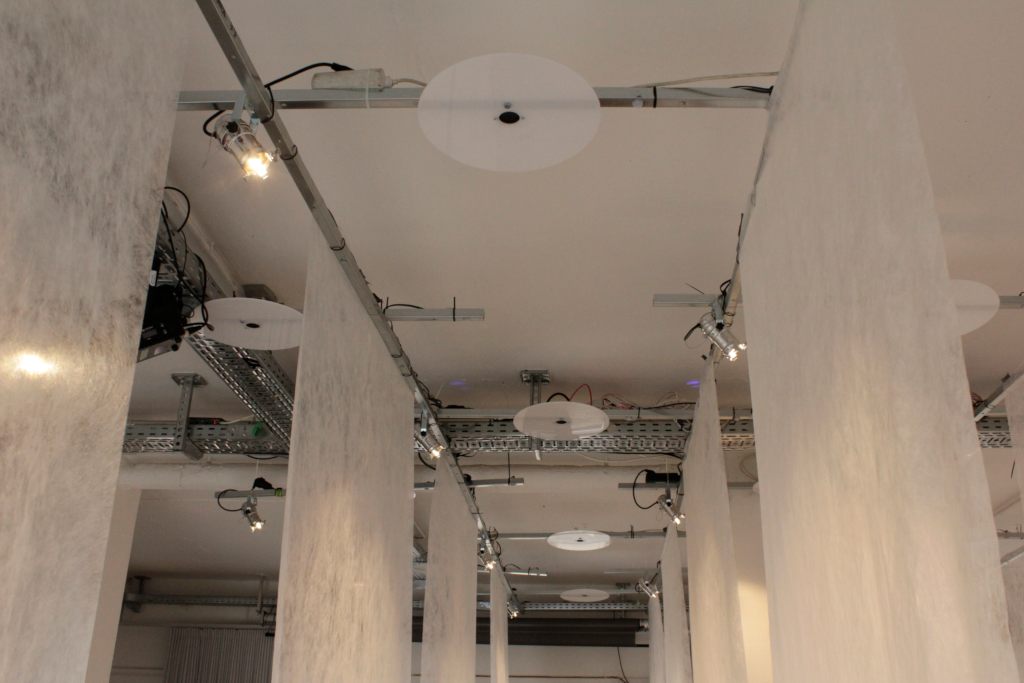
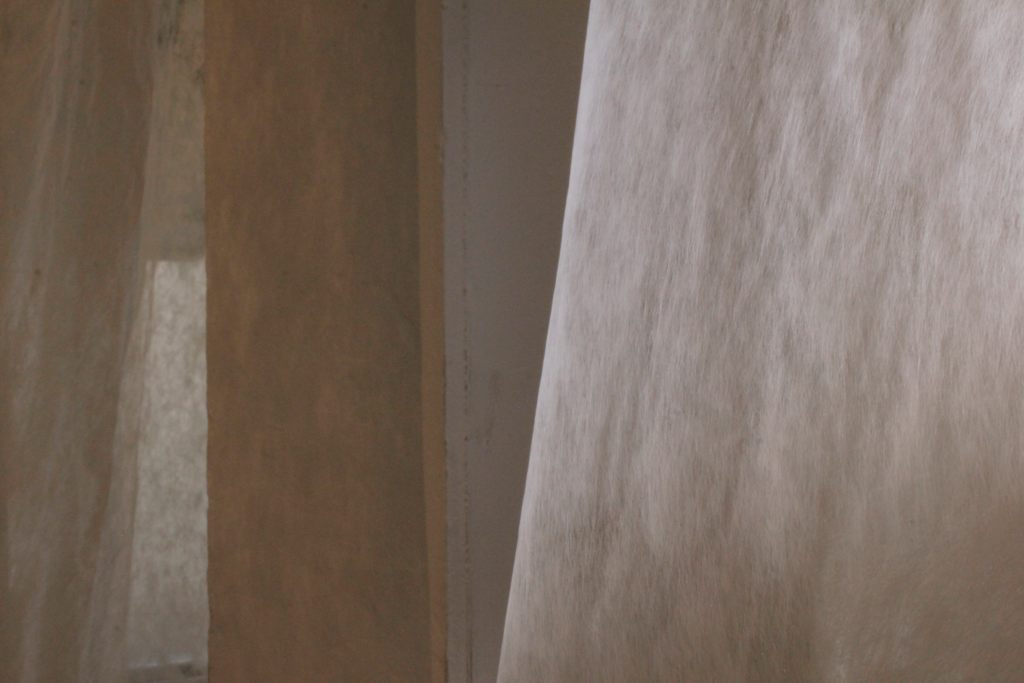
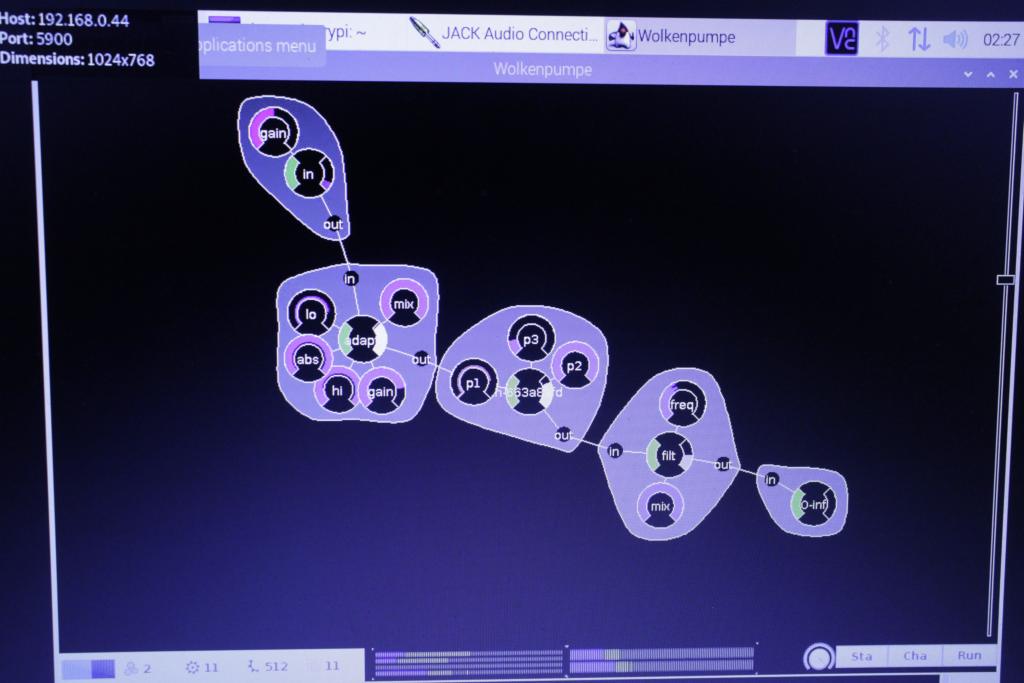
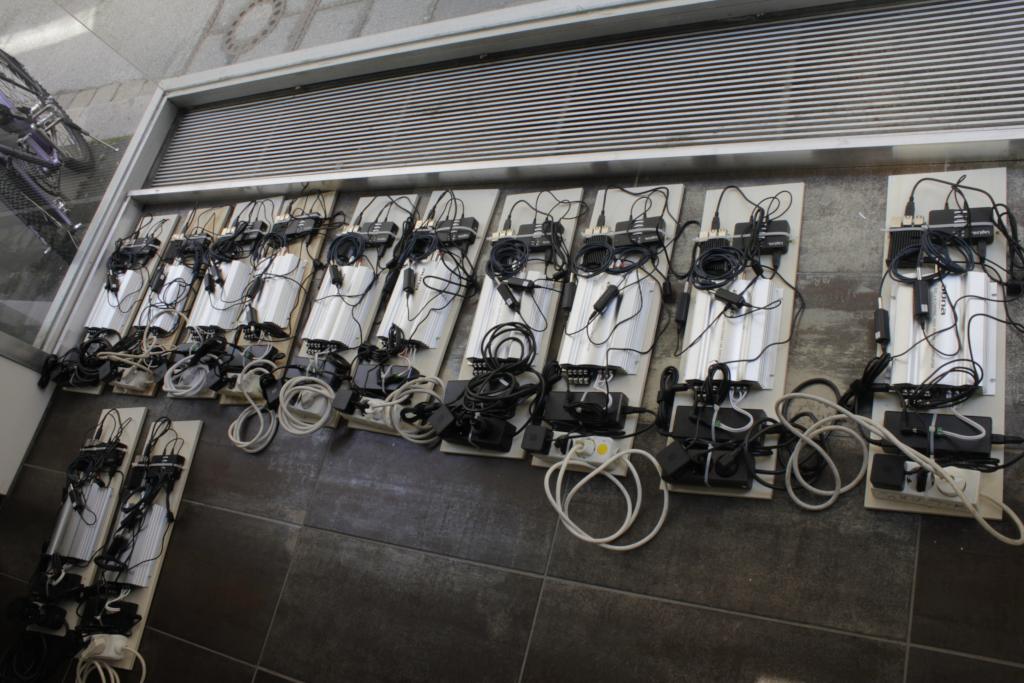
I like about the piece is that it developed a sound surface that in many ways could not be anticipated, thereby fulfilling the idea of an improvisation, even if as an exhibition it is very much an installation, a walkable space with temporality given by the audience, and not a performance. The sound is somewhat brittle and aloof, there is not much “gesture” or “play”, the colour palette is quite reduced, but it is truthful to the idea of layers and opacity/transparency. At first, the sonic space appears very dense, very noisy, high pitched. Then you notice the elements that stand out, and you begin to perhaps follow them, or locate them. It is difficult to locate a particular sound, perhaps because sounds are often composites of different things sounding together, or because of sound bouncing off the floor tiles. But also, like insects in a field, sounds are never staying on forever, and chances are—through your movement picked up by adjacent sensors—that the sound you are trying to locate disappears. In the “tuning” phase of setting up the installation, I spent a lot of time heuristically determining when there were, on the one hand, very harsh, statically pitched, and annoying sounds, and on the other hand, inaudible sounds, both of which can happen when the parameter coupling does not yield an audible configuration, or a configuration that was generally rejected in the algorithmic selection stage following the genetic programming. The system then attempts to move the parameters in a coarser way, eventually giving up and making a “leap” in the trunk space. This introduces a rhythmic element to the sound composition, with pauses and gaps, and with distinctive noise impulses when making the leaps.
Further Links
- Documentation on the Research Catalogue.
- Umbrella project Algorithmic Segments